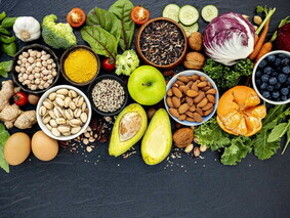
Experts around the world including experts of the World Health Organization praise the importance of breastfeeding and recommend it exclusively during the first 6 months of baby’s life, then along with complementary food for up to 2 years or beyond.
According to those experts, breastfeeding comes with a bunch of benefits for both mother and baby:
For mother, breastfeeding helps the uterus contract and get back to its pre-pregnancy position, as well as it helps bond with newborn and reduce postpartum bleeding and the risk of contracting breast and ovarian cancer.
For baby, breastfeeding plays a major role in preventing infections and reducing the risks of later chronic health problems like diabetes, obesity and asthma.
Breast milk is ultimately the best nutrition a mother can offer her child, because of its various nutritional and non-nutritional components.
In addition to calcium, iron, fats, carbohydrates and vitamins, breast milk contains two types of protein: 60% whey and 40% casein. The balance between the 2 groups allows for quick and easy digestion.
It’s true that the protein content of human breast milk is too low compared to other mammals, as it doesn’t exceed 0.9 mg per 100 ml, but that doesn’t affect in any way the milk nutritional value.
The types of amino acids that make up this protein content are very important, mainly: Taurin that removes bile acids from baby’s body and plays a major role in developing his brain and eyesight, the Nucleotides that develop baby’s organs and tissues and improve fat metabolism, and Carnitine that plays a vital role in breaking down the long chains of amino acids.
As for the whey that forms 60% of breast milk, it’s a combination of water, electrolytes and proteins. Listed below are the most important proteins in whey and their benefits:
Lactoferrin: It stands in the way of bacteria and other iron-dependant microorganisms like coliforms and fungus, preventing their growth in baby’s gastrointestinal tract.
IgA: It helps protecting baby from germs and viruses, as well as allergies and E. Coli.
Along with the other types of immunoglobulins in breast milk, the IgA works on preventing both viral and bacterial infections.
Lysozyme: It’s one of the enzymes in breast milk that aids in protecting baby from E. Coli and Salmonella, whilst promoting the growth of healthy intestinal flora and boosting immunity to fight infections.
Bifidus Factor: It supports the growth of Lactobacillus beneficial bacteria that protects baby against harmful bacteria by creating an acidic environment where they can’t survive.
At the end, it’s important to remind you that mother’s milk perfect combination of proteins, fats, vitamins, carbohydrates, white cells, antibodies, enzymes and hormones, which cannot be added to formulas, is the secret behind what makes it an irreplaceable nutrition!
Read More: Role Of Protein In Infancy

















